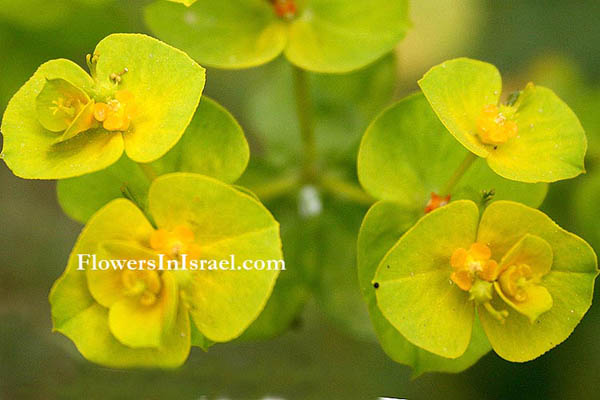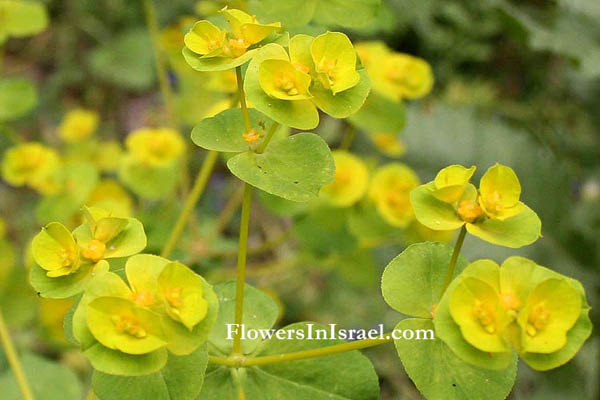Hebrew: חלבלוב מגלי, Arabic: حلبوب , حلبلوب
| Scientific name: | Euphorbia falcata L. | |
| Synony name: | Tithymalus falcatus (L.) Klotzsch & Garcke | |
| Common name: | Crescent Spurge, Sickle-leaved Spurge, Sickle Spurge | |
| Hebrew name: | חלבלוב מגלי | |
| Arabic name: | حلبوب , حلبلوب | |
| Plant Family: | Euphorbiaceae, חלבלוביים |

|
| Life form: | Therophyte, annual | |
| Stems: | Up to 30cm tall; plentiful branching upright stalk; glabrous, glaucos | |
| Leaves: | Alternate, entire | |
| Inflorescence: | Cyathium; Cyme | Flowers: | Cyathia solitary, axillary or 1 or 2 terminal on short peduncles; green |
| Fruits / pods: | Capsule, greenish, ovoid, three-cell, c 2.5 mm long, deeply three-furrowed, glabrous and smooth; seeds oval, compressed, 1-2 mm long, with a spherical-conic appendage, and with several transversal grooves | |
| Flowering Period: | March, April, May, June, July, August | |
| Habitat: | Batha, Phrygana | |
| Distribution: | Mediterranean Woodlands and Shrublands, Semi-steppe shrublands, Shrub-steppes | |
| Chorotype: | Med - Irano-Turanian | |
| Summer shedding: | Ephemeral |

Derivation of the botanical name: Euphorbia, Εὔφορβος, Euphorbus, after the Numidian physician Euphorbus, physician to Juba II, King of Numidia and Mauretania, about the end of the first century BCE. falcata, sickle-shaped, falcate. spurge from the Old French word espurgier (Latin expurgare), which means "to purge." The sap of many herbaceous Euphorbia species have traditionally been used as a purgative, or laxative.
|